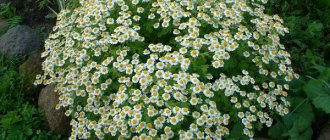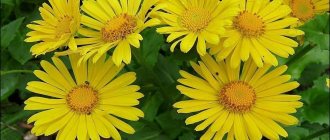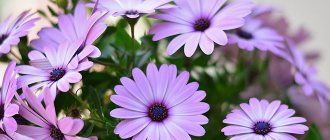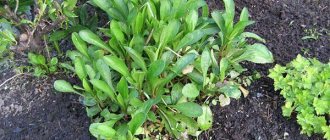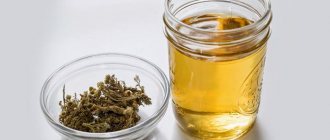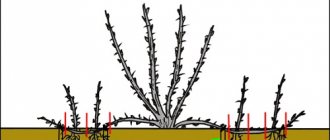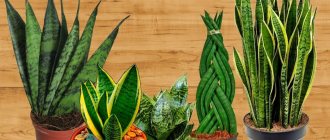According to statistics, this medicinal plant is one of the most commonly used remedies in folk and traditional medicine. Field chamomile is the most widespread plant throughout the Eastern European part of the globe. In Russia, these yellow-white flowers, reminiscent of the sun, can be found in any zone of the black earth strip. A bouquet of field daisies is a symbol of love and purity.
Collection, preparation and storage
Chamomile belongs to the annual herbaceous plants of the Asteraceae family. The flowering time for field chamomile is at the end of May and the beginning of September, it all depends on the geographical features of the flowering site. The flowers of the plant collected from May to September have the most valuable medicinal properties.
The collection of inflorescences must be carried out in dry, sunny weather. Under such conditions, field chamomile, the medicinal properties of which are determined by its chemical composition, is most suitable for harvesting raw materials. At the end of the day, just over 200 g of dry medicinal component is obtained from one kilogram of flowers.
As the experience of previous generations shows, field chamomile can be stored under proper conditions for about one and a half years. The storage conditions for the drug are the simplest. Glass or paper and cardboard containers will be an excellent storage for wildflowers. The main condition is a dry and dark place.
Varieties
Chamomiles are wild flowers that come in many varieties. They differ in names, appearance, description of properties.
Lugovaya
This plant is also called common cornflower. It reaches 1 m in height. At the same time, the flowers can be 7 cm in diameter. In the middle of the flower there is a yellow center. The petals are elongated and white in color.
This variety is often used by gardeners to decorate gardens and create landscape compositions.
Meadow chamomile is quite large in size.
Lesnaya
This type of flower is characterized by a pronounced aroma. Forest daisies have an attractive appearance, white elongated petals and a yellow center. The height of the plant reaches 30 cm.
The crop can be propagated by seed or by dividing the rhizome.
Pharmacy
The stem of the plant is 50 cm high. Chamomile boasts small leaves. All plants of this species bloom at the same time, which helps to obtain a flowering carpet.
This group includes a number of chamomile varieties:
- southern;
- Caucasian;
- golden;
- rough-fruited.
A distinctive feature of the culture is its distinct aroma. It is exuded not only by flowers, but also by leaves.
Chamomile contains a number of useful components.
Small field
Small field chamomile is a common plant that belongs to the Asteraceae family. The culture is most often found in gardens, fields and flower beds. The height of the bushes usually does not exceed 40 cm.
The plant is a perennial. It is often used in medicine, cooking, and cosmetology.
Flowering begins in the first half of June and continues until frost. The culture is characterized by high frost resistance.
Field chamomile: beneficial properties of the plant
The healing components of this plant can replace a whole list of medications in a home medicine cabinet. By the way, the main ingredient in pharmacological compositions of drugs is field chamomile. Here is an incomplete list of beneficial substances contained in a common wildflower:
- coumarins;
- flavonoids;
- essential oils;
- salicylic, caprylic and anthemisic organic acids;
- tannins, protein and mucilage compounds;
- gum;
- multivitamins;
- phytosterols and many other medicinal components.
In dried form, field chamomile contains up to 1% chamomile oil. This component is widely used in the cosmetics industry.
Application of the plant
When describing chamomile, we will focus on its use. In landscape design, this delicate flower is often used to create a “Russian garden”. It harmonizes perfectly with many plants. The English style involves a combination of large perennial garden daisies with cornflowers and poppies. A flowerbed in the French version is a neighborhood of Matricaria with wildflowers with a neatly trimmed lawn.
The best cosmetics as raw materials for creating hair rinses, face masks and all kinds of scrubs. It is also included in toothpastes for the prevention and treatment of periodontal disease. An extract from the plant is used to create perfumes, lotions and eau de toilette.
It is difficult to imagine herbal medicine without the “mother herb”. There are some restrictions on the use of Matricaria. It is forbidden to use it together with ginseng, ginger, aloe and garlic, which have an invigorating effect.
Chamomile is included in hair rinses, face masks and other cosmetics.
What does yellow field chamomile cure?
The preparation of various healing infusions and decoctions based on this plant is very common in folk medicine. For fans of herbal medicine and home treatment, field chamomile remains the main ingredient. The beneficial properties of the plant contribute to the treatment of many diseases and ailments:
- colds;
- migraine;
- diseases of the gastrointestinal tract;
- skin inflammation and so on.
Due to the fact that the plant contains essential oil, which has disinfectant properties that have a beneficial effect on the mucous membrane, many diseases of the digestive system are treated with preparations and remedies made from field chamomile.
However, doctors warn that the treatment may be unsafe. This is important to know for those people who suffer from allergic diseases. For this category of citizens, the best solution would be to consult a qualified specialist.
Beautiful varieties
Which flower can be called especially beautiful? This is a tongueless chamomile - a herbaceous annual, which is characterized by a pronounced fragrant aroma. Thanks to this, by the way, this chamomile is often called fragrant. It differs little from its fellows: the core is yellowish-green, the petals are white, and the structure is convex. Perhaps the only distinguishing feature is the large number of thin string-like leaves decorating the thick stem. Thanks to them, fragrant chamomile seems denser and fluffier.
Border roses - what kind of variety are they?
The flower does not grow well in shaded areas, preferring open sunny spaces. It is for this reason that it can often be found on roadsides and in abandoned areas where trees and shrubs are absent.
Note! Regular feeding allows you to get flowers from each bush 3-5 times per season.
Blue perennial Felicia
Another very attractive species is the perennial blue daisy. Also called Felicia, she came to Russia from South Africa. The plant is characterized by an unusual coloring of the petals; it can be soft turquoise, sky blue, deep blue, and purple veins are often visible on the petals. The bushes are low, up to 50 cm; small leaves are hidden under the large inflorescences. The plant requires care: it should be fed once every three weeks and watered as the soil dries out.
Slightly taller is the meadow daisy, also called cornflower. Its height reaches 80 cm. Each branch is crowned with a white and yellow inflorescence. Long flowering begins in the very first summer months, the plant blooms again in mid-August.
Important! Nivyanik is a perennial that grows quite quickly. That is why experienced gardeners recommend dividing the roots every three years and replanting them either in the spring or at the end of summer after flowering.
Nivianik needs special care, which includes moderate watering, loosening and mulching of the soil.
Common chamomile, which can most often be found in meadows, is also quite popular. It takes root well in garden plots; to do this, it is enough to sow seeds collected from wild flowers. The annual plant is characterized by a fragrant aroma and healing properties:
- painkiller;
- antibacterial;
- hemostatic;
- soothing;
- antihistamine.
To prepare a decoction based on chamomile flowers, the raw materials must be prepared. This is not difficult to do: first you need to cut off the inflorescences that begin to fade, lay them out in a thin layer on paper, which must first be perforated. Eavesdrop on flowers on a table under a canopy so that they are not exposed to direct sunlight. The temperature should not exceed 35 °C.
Nivyanik in the garden
Important! Flower growers warn that it is not recommended to cut flowers to prepare decoctions in areas that are located near roads, landfills or farms.
Roman chamomile, which may also be called chamomile nobilis, is a low-growing perennial plant that has excellent frost resistance. This grass gets its name from its creeping roots and very modest size. The aroma of the flower deserves special attention; according to the description, the smell vaguely resembles an apple. For this reason, the ancestors hung previously dried bunches from the ceiling, thus obtaining a natural air freshener, which had another advantage: it drove away insects. Under natural conditions, the navel in Russia is found only in Crimea.
Note! Dried chamomile flowers can be used both externally and internally.
What does chamomile help with? Decoctions from the inflorescences can be drunk to strengthen the nervous system, get rid of headaches, and cure colds. In cosmetology, chamomile is used as a healing, moisturizing and cleansing component in skin care cosmetics for the face and hands.
Chamomile green
Traditional medicine recipes
There are a large number of folk remedies using chamomile. Here are some healing recipes:
- For diarrhea, intestinal and stomach colic, as well as for various spasms of the gastrointestinal tract and gastritis, the following recipe is used. Pour 1-2 teaspoons of dry chamomile into a glass of water and leave for 15 minutes. Take this decoction one tablespoon 3 times a day. The course of treatment lasts one week.
- For a sore throat, the following recipe will be very effective. Mix two teaspoons of dry chamomile and linden blossom and pour 500 ml of boiling water. Leave for no more than 30 minutes. Strain the broth and gargle 3-4 times a day.
- For arthritis and arthrosis, rheumatism of the joints, to relieve heaviness and pain, baths with chamomile decoction are an excellent remedy. Pour 200 g of raw material with 3 liters of water. Bring this entire liquid mass to a boil over low heat, then pour into a container. Carry out the procedure for 15-20 minutes.
Medicinal properties and harm
A representative of the Astrov family brings benefits when making the following diagnoses:
- respiratory tract problems;
- gastritis and pancreatitis;
- skin damage;
- stomatitis;
- migraine;
- flatulence;
- haemorrhoids;
- cystitis;
- bleeding after childbirth;
- painful menstruation;
- PMS;
- toothache;
- poor appetite;
- increased excitability;
- insomnia.
Contraindications for the use of chamomile herb:
- allergy;
- predisposition to diarrhea;
- anacid gastritis;
- pregnancy;
- lactation;
- use of aspirin and blood thinners.
In other cases, a representative of the Astrov family is absolutely safe for the human body. To be on the safe side, an infusion of it is dripped onto the inside of the arm and awaits the result of an allergy test. The use of pharmaceutical chamomile and its use for medicinal purposes should be dosed. Otherwise, the person will begin to suffer from regular migraine attacks.
The use of pharmaceutical chamomile should be dosed
Chamomile for weight loss
Thanks to its disinfectant and antiseptic substances that act on the secretions of the gastrointestinal tract, chamomile remains one of the effective means for weight loss. Chamomile tea helps in the fight against excess weight, which anyone can drink without harm to health. Two tablespoons of medicinal raw materials are brewed like regular tea. This drink not only helps you lose weight, but also makes your body rejuvenate.
Pests and diseases
Chamomile, although it has strong bactericidal and repellent properties, is itself susceptible to attacks by pests or diseases. This can happen for various reasons, but the main one is always improper care. Usually a mistake in care is untimely watering, either too rare or too frequent.
Diseases
Manifestation of rust
Basically, chamomile is affected by fungal infections, among which are the following:
1 Powdery mildew. Its manifestation is the formation of a whitish coating on the leaves and stems. Sometimes the root system of the plant is also affected. Over time, the plaque acquires a brown tint.
2 Fusarium. Most often it affects young plants of the first and second years of life. The disease affects the root system, but becomes noticeable when rot appears on the root collar. The affected part of the plant turns brown instead of green. The leaves turn yellow and the shoots become thin.
3 Rust. With this disease, the upper side of the leaves becomes covered with red or black spots, and black fungal bodies with spores appear on the underside.
4 Gray rot. It is characterized by many necrotic spots on all parts of the plant. The spots grow very quickly and a grayish mycelium appears on them. When the first symptoms of damage appear, the plant should be treated with fungicides. These may be Topaz, Fundazol or Kuproxat. You should strictly adhere to all recommendations for the use of products specified by the manufacturer. Typically, plants are processed twice with a break of 10 days. Collection of material from plants treated with fungicides is allowed if the last treatment was carried out no earlier than 20 days before collection. It is better to miss one year's harvest than to receive medicinal material with fungicide residues.
If gray rot appears, the plant should be destroyed as quickly as possible , and the soil in its place should be treated with any anti-fungal agent.
However, it is best to prevent fungal infections from occurring by using preventive methods. These include, first of all, a competent watering schedule, as well as regular loosening of the soil and weeding.
Pests
Chamomile affected by aphids
Among insects, chamomile can be attacked by aphids, thrips, wireworms and star flies.
1 Aphids and thrips . The most common pests of almost all garden crops. These insects can be found on all parts of the plant. Densely clinging to its stems and leaves, they suck the juices from the soft tissues of the plant. Numerous microtraumas can form on the leaves: spots, stripes or dots. Damaged tissues begin to die over time, the foliage withers and falls. The flowers also become deformed and lose their attractive appearance. Measures to combat aphids are quite simple - the plant must be treated with insecticides. For this purpose, specialized anti-tick products, so-called acaricides (for example, Karbofos or Agravertin), are best suited.
2 Wireworms. In fact, this is not a separate species of insect, but the larvae of a click beetle. They live in the soil for several years and damage the roots of the plant. Most often, the larvae attack potatoes and plants that are planted next to them. The best way to get rid of wireworms are traps. Place a small piece of potato, carrot or beet at the bottom of a small hole, and cover the hole itself with a board. Regularly, every 2-3 days, you should lift the board and get rid of trapped pests.
3 Star-winged fly. Adult plants and larvae infect the central shoots and inhibit plant growth. As a rule, larvae accumulate in large groups. It is recommended to treat the plant with insecticides, as well as manual collection and destruction of the larvae.
Chamomile for children
Even pediatricians today recommend bathing children, including infants, in chamomile decoction. To do this, it is better to use dry chamomile purchased at a pharmacy. Such baths will benefit babies.
The anti-inflammatory and antibacterial properties of field chamomile will calm the child and relieve skin irritations. It is recommended to make chamomile infusions with a low concentration of dry plant. The most complete consultation can be obtained from a pediatrician. For children under five years of age, decoctions of chamomile for internal use are strictly prohibited.
Reproduction methods
Decorative daisies reproduce in two ways - by seeds and by dividing the bush.
Bush dividing method:
- The procedure is carried out at the end of September - the first week of October, always on a cool and cloudy day.
- One part with the root system is separated from the mother bush and transplanted into a previously prepared hole. Before planting, the hole is watered with settled or rainwater. Side shoots should be cut with a clean, disinfected tool.
- The hole with the cut part is filled with a nutritious soil mixture, which is then lightly compacted.
When propagating by division, only the healthy, young and strongest shoots are cut off. Next year, shoots from the opposite side will need to be cut off from the same mother bush.
Growing daisies in the same place is allowed for no more than 5 years, then the location for the flowers needs to be changed, otherwise they will begin to weaken and may stop blooming.
Propagation of a flower by seed means the correct collection of seed material, with its further use for seedlings:
- Seeds are collected from completely dried flowers. The flowers are cut and left in a dry place with good ventilation.
- The seed material is contained in tubular flowers, from which it is hatched when the daisies are completely dry.
- The seeds are winnowed and stored in a paper bag.
The use of collected seeds for seedlings is possible for several years. Seeds can be immediately planted in open ground.
Sometimes chamomile is planted before winter
Planting can be done even before winter - the seed will not freeze, but on the contrary, it will undergo stratification, making future plants stronger.
Only ordinary chamomiles can be propagated by seeds. Varietal and double representatives of the plant do not retain parental characteristics in the seeds.
Contraindications
Doctors categorically do not recommend that pregnant women take any decoctions or tinctures of chamomile. The thing is that wildflower can stimulate the production of estrogen. For a successful pregnancy, the amount of estrogen in the ovaries should not exceed the norm.
Otherwise, this can negatively affect the course of pregnancy, sometimes leading to its early termination. It should also be taken into account that uncontrolled use of medicines based on field chamomile can lead to attacks of headaches and vomiting. When treating eye diseases, chamomile infusions should be used only after consultation with an ophthalmologist.
Landing - rules and features
Planting a flower can be done either by seedlings or through seeds. The seedling method is preferred as it is more reliable.
With the seed method, seeds can be planted directly in open ground.
Rules and features of chamomile seedling planting:
- Planting time is March.
- Preparing seeds - 3 weeks - 1 month before planting in the ground, the seeds are placed in the refrigerator on the bottom shelf. Stratification will make the planting material stronger, reducing its sensitivity to diseases and pests.
- Containers - a tray divided into cells.
- The soil is light, containing 1 part sand and peat.
- Several seeds are dropped into one cell.
- The seeds are covered with a thin layer of nutritious soil mixture on top.
- The container is covered with a loose, transparent film and placed near the windowsill.
- The soil is moistened from the sprayer as it dries.
It is better to immediately plant chamomile in separate containers.
It is recommended to immediately place the seedlings in separate containers, so as not to have to thin them later, as there is a risk of damage to the root system.
You cannot place a container with seeds directly on the windowsill. When exposed to direct sunlight, seeds will germinate less easily and young shoots may develop sunburn.
Instructions for caring for planted seeds and seedlings:
- At room temperature, the first seedlings will appear in about 2 weeks.
- Immediately after the sprouts appear, the film is removed from the container and the container is placed in a well-lit place, the main thing is that there are no drafts there.
- If it is not possible to provide abundant sunlight, you can use fluorescent lamps. Daylight hours are 14 hours.
- Thinning of seedlings occurs when seedlings reach 5 cm in height. The essence of thinning is to leave only one, the strongest seedling in each cell.
- To make the seedlings more spread out, pinching is done over the 3rd leaf plate, this will promote the growth of lateral stems.
When thinning, seedlings should not be pulled out of the ground, as this can damage the roots of neighboring shoots. It is recommended to break off the seedling above the soil.
Interesting Facts
There are many songs, ditties, fairy tales and sayings about the field chamomile, a flower associated with Russian nature. In the old days, these plants were called navels because of their yellow navel. Field chamomile also had several names in Rus', all of them were invented by herbalists: roman herb, roman flower.
In Tibetan medicine, this plant is considered a miraculous remedy for rejuvenation. Chamomile tea is a cult attribute. Every day, the monks drink this healing drink before going to bed, keeping the secret of its preparation secret.
In nature, field chamomile is also a plant protector. If you plant chamomile seeds around an apple tree, then its fruits are not afraid of the codling moth. There will never be white moth and cabbage cutworm caterpillars in the garden if chamomile grows there.
Here it is, field chamomile!
Growing a flower and further caring for it
Chamomile flowers are transplanted into open ground no earlier than 30-45 days after emergence. A prerequisite for transplantation is the absence of frost.
To plant chamomile flowers, you need to choose a well-lit area, without drafts. Suitable soil is limestone or neutral. Groundwater must lie deep.
The description of field chamomile speaks of the unpretentiousness of the flower, and therefore it can be planted not only in the ground, but also left in a pot
Planting a chamomile flower in open ground:
- Preparing the site includes digging it up and applying complex fertilizer intended for flowers.
- The depth of the holes is from 20 to 30 cm. The distance between the holes is at least 40 cm.
- The seedlings are taken out of the container with a lump of earth on the roots, carefully moved into the prepared holes, and covered with earth on top.
- The soil is lightly compacted and watered.
The depth of the holes and the distance between them must be selected depending on the type of flower.
When daisies grow, they need to be provided with proper care, which includes the following factors:
- Watering is systematic for the first 2-3 weeks, until the daisies take root. You cannot overfill the soil. The frequency of watering depends on how quickly the soil dries out. When the daisies take root, watering is reduced and is carried out only during prolonged drought.
- Mulching - carried out after watering, the recommended material is peat.
- Loosening the soil is a mandatory procedure and is performed after each watering.
- Fertilizer - applied every year. The nutrient substrate consists of peat, humus and compost, which are mixed with the soil. In the spring, ammonium nitrate is scattered under each bush in a dosage of 20 grams per 1 m².
- During the formation of buds, under flowers that are distinguished by lethargy and pale leaf blades, it is recommended to apply a urea solution.
- In autumn, slaked lime or dolomite flour is added to highly acidic soil.
After applying saltpeter under the bush, there is no need to water the plant.
The bushes must be prepared for wintering, because what is chamomile? It is a heat-loving flower. Before the onset of frost, the above-ground part of the bushes is completely cut off, then they are covered with dry leaves or sawdust.
In regions with severe frosts, it is recommended to cover daisies with non-woven materials.
Possible side effects
If the recommended dosage is followed, adverse reactions to taking chamomile preparations rarely occur. Since chamomile oil has a more pronounced effect than a water infusion, its use is more likely to cause side effects. Not excluded:
- skin allergic reactions;
- diarrhea;
- nausea and vomiting.
When using chamomile preparations, you must follow the dosage indicated in the instructions, otherwise you can harm the body. An overdose can manifest itself as headache, weakness, and tachycardia.
If recommended doses are exceeded for a long time, depression of the central nervous system and decreased muscle tone are possible.
What does chamomile look like?
A member of the genus Matricaria of the Asteraceae or Asteraceae family, chamomile (Matricaria chamomilla) is well known to everyone for its elegant flowers. This herbaceous annual plant blooms only once and dies soon after flowering. The lifespan of Matricaria chamomilla is 3-4 months.
The plant is a low (up to 0.6 m) herbaceous bush with a branched stem, pubescent, ribbed and hollow inside. All above-ground parts have a strong characteristic odor.
The leaves consist of thread-like pointed lobes covering the central and lateral veins. The leaf sizes are 1.5-6 cm in length and 0.5-1.8 cm in width.
At the top of each branch and stem of the plant, inflorescences-baskets of small tubular yellow flowers develop. Inflorescences (they are called flowers) with a diameter of up to 2.5 cm are surrounded by female flowers with white tongues (petals) no more than 14 mm long. At the ends of the tongues you can see five cloves.
At the beginning of flowering, the tongues are directed upward, then they are located perpendicular to the peduncle, and over time they fall down. In this case, the basket seems to turn outward, taking on a convex oval shape.
Similar species
When preparing chamomile, which is recognized by both official and traditional medicine, people sometimes confuse it with species similar in appearance, which do not have medicinal properties and do not even belong to the chamomile genus. This:
- Tripleurospermum inodorum - genus Tripleurospermum inodorum;
- dog's navel, dog's daisy (Anthemis cotula) - genus of navel
- field navel (Ánthemis arvensis) – genus of navel;
- Russian navel (Anthemis ruthenica) – genus of navel;
- common cornflower, popovnik (Leucanthemum vulgare) – genus cornflower;
- pyrethrum corymbosum, pyrethrum corymbosum - genus pyrethrum.
How to distinguish chamomile when collected from similar plants? First of all, of course, carefully examine the photo of each twin species; often the differences are visible immediately. It would also be a good idea to read botanical descriptions.
Botanical description of common cornflower
Systematics of the plant.
- Domain: Eukaryotes (Eukaryota);
- Kingdom: Plants (Plantae);
- Department: Angiosperms (Floral);
- Class: Dicotyledons (Magnoliopsida);
- Order: Asterales
- Family: Compositae (Asteraceae);
- Genus: Leucanthemum;
- Species: Common cornflower (Leucanthemum vulgare Lam.);
- Synonyms: Common cornflower, Meadow popovka, Common popovnik, Meadow chamomile, Whiteflower, Nivyanka, Roman grass, Whitehead, Chamomile, Chamomile, (Chrysanthemum Leucanthemum L., Matricaria Leucanthemum Desv. ex Lam., Pyrethrum Leucanthemum Franch.)
Leucanthemum vulgare is one of the species of the genus Nivyanik, which, in turn, is part of the large Asteraceae family. A perennial, herbaceous plant, cornflower is very similar to, but is not, field chamomile.
The Nivyanik plant is considered a weed because it can easily, by self-seeding, take over the surrounding space, gradually displacing other, weaker species. But there are also exceptions. For example, the Red Book of the Republic of Sakha (Yakutia), in the list of wild plants and mushrooms, contains an entry about common cornflower; it is included in it as a rare species with a small number.
The chemical composition of cornflowers has not been fully studied, the information is incomplete and insufficient to begin using this plant in official medicine, but this does not prevent it from being used in herbal medicine for children and adults.
Interesting Facts:
- Meadow chamomile is often called common chamomile and is confused with chamomile.
- This species is used in folk medicine as an anti-inflammatory, diuretic and analgesic.
- Popovnik is a plant that is both a weed and one of the species listed in the regional Red Books.
- Common cornflower has become the floral emblem of Sweden's historical province of Scania.
This variety is very tenacious and has good immunity to various diseases. It is not interesting for most pests and is less often affected by insects than others.
Morphology
The morphological description of the common popovka can be started from the “bottom”. It has a short rhizome, taprooted, thickened, horizontal or obliquely ascending, branched, with thin root lobes. Adventitious buds are formed on the roots and in the root collar.
The basal leaves, creating a basal rosette, are crenate, drawn into a long petiole, ovoid in shape, up to 15 cm in length. Stem leaves with an unevenly toothed or crenate margin, sessile, with an oval-cuneate shape narrowed towards the base, opposite, with a sharp or blunt apex. The stem is straight, round, granate-furrowed, most often simple, sometimes with lateral shoots.
Flowering, depending on the region - from late June or early July to September, the next year after planting. Fruiting is from August to October.
Seeds (fruits) are wedge-shaped, slightly curved or straight, yellowish-gray in color (pictured above). The cross section of the seeds is round. On the surface there are noticeable ribs of a lighter color than the body of the achene itself, in the amount of ten pieces. Achene size: 1.75 – 2.25 x 0.5 – 0.75 x 0.5 – 0.75. The weight of one seed is 0.0014 – 0.0017 g. The seeds have excellent winter hardiness and excellent germination.
Spreading
It is not for nothing that common cornflower is called meadow daisy; this plant tends to grow in meadows, forest edges, pine and birch forests, along roads. The geography of its natural growth covers the entire European part of Russia, Western Europe, Siberia, the Caucasus, the Far East, Central Asia, Mongolia, and China. In addition, this flower has taken root well in North America.
Impact on the body
Heart and blood vessels
Chamomile flowers are used in preparing infusions or in complex preparations. They strengthen and give elasticity to the walls of blood vessels in the brain and heart, and reduce blood pressure. The therapeutic effect relieves shortness of breath, restores heart rhythm, and prevents strokes.
Liver
Adsorbent properties have a healing effect in the treatment of liver pathologies: hepatitis, cirrhosis.
Chamomile cleanses the body of toxins, improves the functioning of the gallbladder, and accelerates the regeneration of organ cells.
- Pectins absorb toxins;
- Choline removes fats from the liver;
- Nicotinic acid relieves inflammation.
Gastrointestinal tract
When taken orally, decoctions coat the walls of the stomach, extinguish inflammation, and heal ulcers. By relieving intestinal spasms, the product relieves pain and colic and improves peristalsis.
The chemical composition contains gum, which cleanses the body and increases the secretion of the digestive glands.
Chamomile preparations are prescribed for gastrointestinal pathologies:
- acute and chronic gastritis;
- stomach and duodenal ulcers;
- intestinal spasms;
- enterocolitis;
- flatulence;
- diarrhea.
Kidneys
Herbal solutions are used in the treatment of urolithiasis, cystitis, pyelonephritis, and gynecological diseases. Suppress pathogenic microorganisms, relieve inflammation in the kidneys.
Herbal tea is a means of preventing exacerbations of inflammation in the urinary tract.
The active substance coumarin removes excess uric acid. The results of treatment are achieved in the early stages of the disease. Kidney therapy begins with one ingredient, to which multicomponent preparations are gradually introduced.
The best healing effect is provided by the combination: chamomile, St. John's wort, yarrow, calendula, plantain leaves. The herbal mixture relieves spasms of the bile ducts, reduces inflammation, and increases bile secretion.
Varieties and their names
Various varieties of decorative daisies have been bred to decorate the garden. These magnificent plants are becoming increasingly popular with most gardeners every day due to their unpretentiousness and undemanding nature. The ancestor of each variety is a specific wild species, uniting varieties according to various characteristics.
The varieties descended from the common cornflower differ in the shape of the petals (reed flowers) and their number, which determines their doubleness.
- Plants of the Crazy Daisy reach a height of 90 cm and have beautiful lush inflorescences with a diameter of 10 cm, blooming in July.
- Aglaya variety is slightly lower, its plants reach a height of 50-60 cm, and the inflorescences are slightly larger than those of Crazy.
- Snow Lady has large inflorescences reaching a diameter of 17 cm. But, unfortunately, plants of this variety cannot withstand winter cold, so they are more often grown as annuals. In contrast, Edelweiss or French chamomile, up to 90 cm high, is a frost-resistant variety that blooms from July until frost. It stands out for its beautiful inflorescences up to 12 cm in diameter, shaped like a chrysanthemum.
- In addition to those listed, there are several more varieties such as: May Queen, Maxima Koenig, Alaska, Beethoven, Viral Supreme and others.
Varieties descended from Pyrethrum have one distinctive feature - fern-like leaves. The most prominent representatives of this genus are the varieties Golden Ball, Carlos, Snow Globe, Paradise and Robinson .
The genus Doronicum became the ancestor of 36 species of garden chamomile. The most popular varieties are Doronicum Caucasian, Podorozhny and Oriental .
